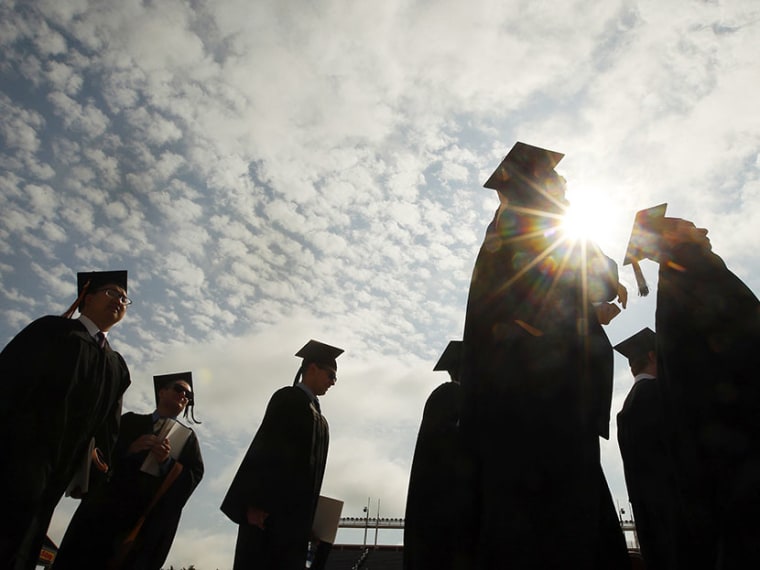It's been nearly two weeks since interest rates on student loans have doubled, but the Senate still hasn't managed to pass a deal to fix them--even though both parties say the new 6.8% rate on lower-income borrowers is unacceptable.
What's holding everything up? The central problem is that keeping interest rates low for students costs a bunch of money, and legislators still can't agree on who's going to pay the price.
Republicans refuse to have the government spend more to ward off the rate hike, while Democrats insist there has to be a cap on interest rates to protect future borrowers from an undue burden. These competing demands have created a game of legislative tug of war, with no clear resolution in sight. The Senate has repeatedly rejected short-term fixes to put off the debate, and liberal advocates have resigned themselves to the fact that interest rates for students are likely to rise even higher down the road.
The latest bipartisan compromise in the Senate contains the rate cap that Democrats have been insisting on, tying interest costs to the 10-year Treasury rate and setting the maximum rate for borrowers at 8.25% for undergraduate and 9.25% for graduate Stafford loans, according to Senate aides. That's even higher than the current 6.8% rate that politicians have deemed unacceptable, and the Atlantic's Jordan Weismann has estimated much rates will rise in the future (See chart below). But the plan would lower borrowing costs in the short term, which would give both parties something to crow about.
The deal fell apart, though, because Republicans deemed the price tag unacceptable: The Congressional Budget Office said the plan would cost $22 billion, according to Senate aides and policy analysts familiar with the negotiations. Republicans have insisted on a plan that would actually reduce the deficit, leading them to dismiss the plan out of hand, and the centrist negotiators say it's still critical to keep costs in check.
"All members are committed to finding a long-term solution that is market-based and budget neutral with caps to protect students from future rate increases," said Crystal Canney, a spokeswoman for Sen. Angus King, a Maine Independent, who's trying to negotiate a compromise along with Sens. Joe Manchin (D-Wv.), Richard Burr (R-NC), and Tom Coburn (R-Okla.).
Senate aides say there may be another path forward: rather than setting different interest rates for undergraduate and graduate borrowers, Congress could make unsubsidized Stafford borrowers pay slightly higher interest rates than subsidized ones. That would likely lower the price tag, as there's a very big pool of undergraduates who take out unsubsidized Stafford loans. It would also make higher-income students pay more in interest costs than lower-income ones, as subsidized Stafford loans go only to students who demonstrate financial need.
That's something that Democrats would probably be inclined to support in the name of economic justice. But Republicans could be reluctant to make some undergraduates pay more than others. "They don't fundamentally believe that undergraduates should have different rates, and they don't believe higher income families should pay more," said one Senate aide, who declined to be named given the sensitivity of the ongoing negotiations.
Whatever the outcome, liberal advocates already feel like future students have lost out, given the direction that the negotiations have been heading. The option they had been holding out for—a one-year extension of the 3.4% rate for subsidized Stafford borrowers—failed in the Senate this week.
And they believe that Democrats will only be able to go so far in reducing borrowing costs for future students, given their willingness to accept variable interest rates—something the White House has supported from the start—and the Republicans' demand to keep the overall price tag down.
"There was a time when $22 billion spent on helping the next generation of Americans go to college would have been considered an investment in the future, not an unacceptable budgetary loss," said Benjamin Landy, a policy associate at the Century Foundation. "As it is, we can expect the latest CBO score to push the next iteration of Manchin-King even further to the right."
